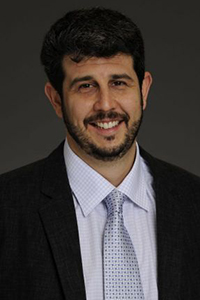Brain-Wave Patterns Shed Light on Pathologies and New Treatments in Substance-Use Disorders
Brain-Wave Patterns Shed Light on Pathologies and New Treatments in Substance-Use Disorders

The biological impact of mind-altering substances on brain activity may provide clues about how to more effectively treat people who have substance-use disorders (SUDs). Researchers led by Mera S. Barr, Ph.D., of the University of Toronto, a 2017 and 2013 BBRF Young Investigator, have conducted a comprehensive review of current evidence regarding the impact of different kinds of substance use, abuse, and withdrawal on brain-wave signatures. Their conclusions appeared in the Journal of Personalized Medicine.
Measured with a technology called electroencephalography (EEG) that registers brain activity through sensors placed on the scalp, brain waves are generated by the oscillations of activated neurons. These oscillations range from very slow to very fast. The fastest class of waves, called gamma waves, represent the activity of neurons vibrating between 30 and 120 times per second (30-120 Hz).
For years researchers have noted the impact of substance use on gamma-wave patterns and have tried to assess whether there are changes in the patterns among people with substance-use disorders. Now, Dr. Barr and colleagues including Daniel M. Blumberger, M.D., a 2010 BBRF Young Investigator, suggest that such changes in gamma activity may shed light on substance use-associated pathologies and how they might be treated in the future with non-invasive brain stimulation therapies.
Many brain-changing effects of acute and chronic substance abuse have been documented in past studies. For instance, alcohol- and cannabis-use disorders have been shown to impair working memory, the brain’s ability to maintain and manipulate information over short periods of time. Chronic alcohol use may also enlarge structures in the brain called ventricles, and reduce the volume of grey and white matter, which has been linked to cognitive impairment. Cognitive deficits including disruptions in memory, information processing, and divided attention have also been reported in people following acute alcohol intoxication.
Impaired learning, memory, attention, and executive function (decision-making) have been documented in chronic cannabis and cocaine users. As the researchers note, however, cognitive changes have been shown to be reversible in cannabis-use disorder following discontinuation of use.
The 30 studies reviewed by Dr. Barr and colleagues together suggested that gamma oscillations underlie several cognitive domains which are altered by substance use. The studies spanned animal and human research, and showed that all of the substances assessed—alcohol, cannabis, tobacco, cocaine, and amphetamines—were associated with altered gamma activity, during all of the states assessed: acute and chronic exposure as well as withdrawal states. Thus, the team says gamma waves “may be a valuable index of the pathophysiology of SUDs.”
Specifically, clinical evidence showed that acute alcohol exposure decreased gamma activity in people without alcohol dependency, while such decreases were observed across all EEG frequency bands (delta, alpha, and beta in addition to gamma) among people with dependencies. Chronic tobacco use led to an increase in gamma activity, while chronic cannabis use led to a decrease in gamma activity. Clinical data for cocaine and amphetamine use were limited in the 30 studies, making it hard to draw conclusions.
Alcohol and gamma activity had a complex relationship, the team noted. Moderate doses of alcohol decreased gamma activity in non-dependent people, but at higher doses gamma rose rapidly and then fell during exposure. Overall, the researchers said, alcohol may have a range of different impacts on gamma waves depending on the brain area involved and the type of cognition involved. “These findings indicate that several brain areas may be involved in the neuropathology of alcohol-use disorders,” they noted.
The team said their study contributes to the “growing body of evidence indicating the potential for brain stimulation to address deficits associated with SUDs.” They noted two types, tDCS (transcranial direct current stimulation) and rTMS (repetitive transcranial magnetic stimulation), as candidate treatments. Both modulate gamma activity and thus may represent potential therapies for treating SUD-related deficits, for example, in working memory, the researchers said.




